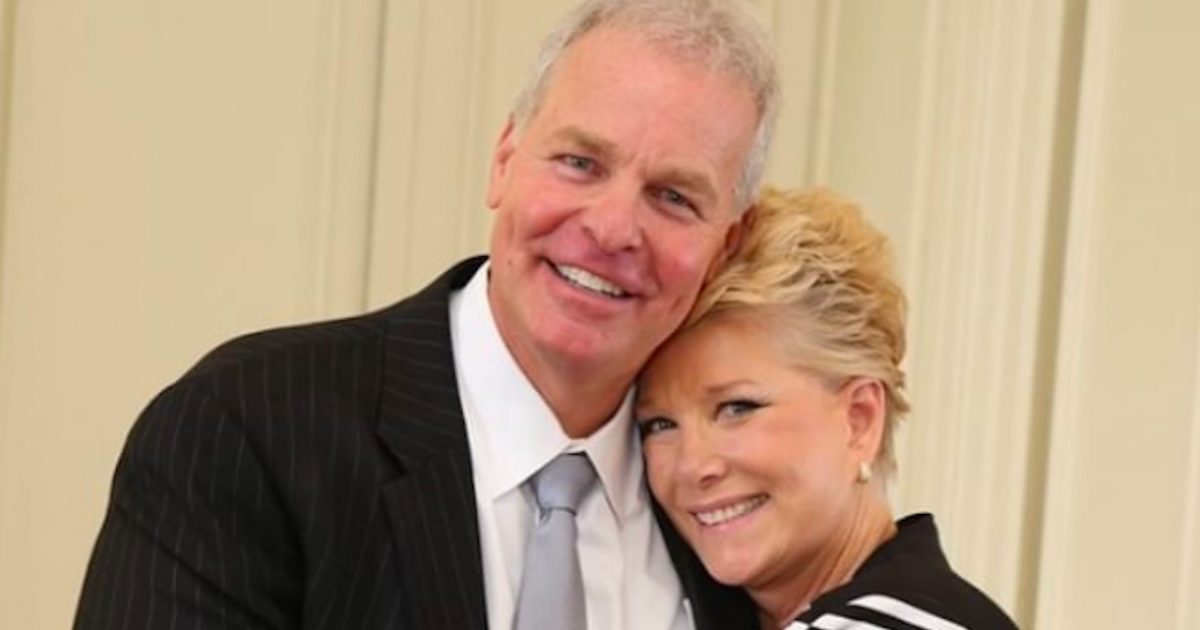In a sweet anniversary message, breast-cancer survivor and TV journalist, Joan Lunden, 69, writes "You had me at hello, and it's amazing how twenty years goes by in a flash! Happy Anniversary, my love!" Lunden married Jeff Konigsberg married in 2000 at age 50.
RELATED: Joan Lunden Talks Aging With Candor and Humor in New Book
Read MoreLunden’s newest book, “Why Did I Come In This Room?” tackles women and aging. With the coronavirus outbreak hit, the former co-host of ABC’s Good Morning America had to cancel her book tour and has been quarantining at home “My heart goes out to anyone who is dealing with, not only, covid-19 but any other critical health issue,” she shared recently. “We can't thank you enough. You are our heroes!”
RELATED: Joan Lunden Opens Up About Aging With Both Candor and Humor in New Book
Her role as a journalist, she told SurvivorNet, helped her avoid a late diagnosis: "The day I got diagnosed I had had a clean 3D mammogram. And it was only a fluke that I walked across the hall and had that ultrasound that found my cancer."
Finding A Snowball in a Snowstorm
“And that’s because, I had interviewed Dr. Susan Love, who wrote The Breast Book, about mammograms, a few years before.” After the interview, Dr. Love asked if she’d been faithful about getting mammograms. “And I said, Yes, but to me, they’re nerve-racking because they always call me back in for more pictures. That freaks a woman out. And I’d always say, ‘Why? Did you see something bad?’ And I always heard the same thing, No, it’s just that you have dense breasts so it’s hard to see anything at all.'”
RELATED: Millions of Women With Dense Breasts A New Congressional Law What You Need
With that, Dr. Love said, ‘Whoa, wait a minute. If you have dense breasts, cancer might not be seen in a mammogram because dense tissue shows up as white and so does cancer. And it’s kind of like trying to find a snowball in the middle of a snowstorm.'”
Lundin says it was Dr. Love’s advice that made her insist on the ultrasound that caught her cancer. “I was diagnosed with stage two triple-negative breast cancer and that is a very virulent, fast-growing cancer that can pop up and become significant within 18 to 24 months,” she told SurvivorNet. “And if I hadn’t walked across the hall and had that ultrasound. I don’t know, I might not be sitting here today talking to you.”
Mammography And Dense Breasts
Millions of women have dense breasts and many don't even know the term. "Dense breast tissue blocks the X-Ray and so that looks white," says Dr. Connie Lehman, Chief of the Breast Imaging Division at Massachusetts General Hospital. "Unfortunately cancers also block the X-Ray and also look white. And so when you have a white cancer, hiding in white dense breast tissue, it can be missed."
RELATED VIDEO: “Mommies Make It Through Cancer” says Joan Lunden’s Best-Selling Co-Author, Laura Morton
"Digital mammography, it turns out, significantly improves the quality of the mammogram," says Dr. Lehman. "We also have a new tool that's even more exciting, it's 3D tomosynthesis mammography. This allows us to find more cancers and to significantly reduce our false positive rate," so the new technologies available make 3D pictures of the breast that are useful for catching breast cancer.
RELATED VIDEO: 3D Mammography Detects 34% More Breast Cancers Than Traditional Mammography
"We're taking thin slices through that breast tissue, like slices through a loaf of bread, and we can look at each slice independently, rather than trying to see through the entire thickness of the entire loaf of bread," says Dr. Lehman.
"So those thin slices help us find things that were hidden in all the multiple layers, and also important is that some of the things that looked a lot like it could be a cancer, when we went through the thins slices saw that this is just overlapping, normal breast tissue, and that's when we reduce our recall rates significantly."
Joan Lunden had no family history of breast cancer before she was diagnosed with stage 2 triple-negative breast cancer was diagnosed in 2014
"I highly recommend that women go to high-quality centers and ask for a tomosynthesis 3D mammogram. It's a better mammogram. Lower false positives, better chance of finding those cancers through those thin slices, and at high-quality centers in the right hands, it can really improve the mammography experience," says Dr. Lehman.
RELATED: Is a Cancer Boom Coming? Coronavirus Stops Mammograms, Colonoscopies, and PSA Tests
As many radiology centers have postponed screenings due to the coronavirus outbreak, it’s especially important to contact your doctor to determine when they will resume normal operations and re-schedule if necessary.
Breast Cancer Advocacy
For Lundin, the diagnosis experience turned her into an advocate , “Here I am a journalist and how could I have been so uneducated about something so incredibly important?,” she says. “As I started speaking to other women, I found out that almost every woman I talked to didn’t know that dense breast tissue was a risk factor or that it could mask cancer in a mammogram.
RELATED: Reducing Anxiety About False Positives
So, that’s really what sent me on that path to become a breast cancer advocate. Then the more I learned about it, the more I felt the need to share it with everyone.”
Learn more about SurvivorNet's rigorous medical review process.


